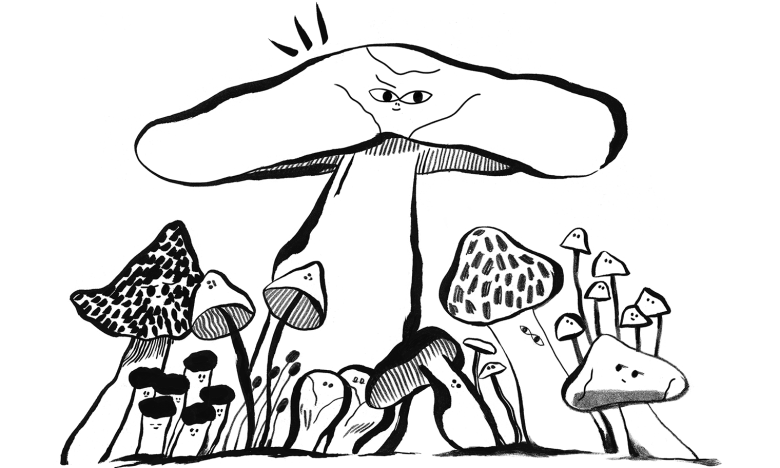
Dunkin’ Your Brand
For long-standing brands, refreshing the look or “maintaining relevancy” is something that companies do to increase brand interest and withstand the stormy weather of the market. However, there are times I see companies do this and I scratch my head. Two current companies are on my brand hit list: Dunkin’ (formerly Dunkin’ Donuts) and Mailchimp.
Let’s start with Mailchimp.
I am an avid and brand loyal user of Mailchimp. I think they have a killer product and I 100% recommend all of my clients to use there product. But my Lord, their design team has started using mushrooms.

No seriously, this image is a screenshot from their site as an illustration of how you can use Mailchimp to level up your business. What???
Mailchimp recently updated their website design and the entire site is riddled with the tone of New Yorker Magazine/New York Times illustrations that resemble nothing of a software company. And maybe that is on purpose. It is a vast shift from the previous tone mostly centered around the mascot Freddy the Chimp and modern material design. Their new font choices have a pre-digital feel and the tone of the imagery speaks printed newspaper.
I think the brand team took some risks here and sometimes these risks pay off. However, these type of shifts in branding should make sense to the consumer. I am not sure this translates.
Now on to Dunk on Dunkin’.

Dunkin’ Donuts announced that they are dropping the tasty sweet treat from their name. But why? According to their Wikipedia, they have been heralding coffee since 1961. When American started running on Dunkin’ (a campaign slogan they have used for years) why didn’t they change the name then?
Changing your brand name is a major shift – from overhauling their store branding and merchandising, to changing the hearts and minds of consumers. Why would a company make such a decision?
More revenue.
Here are 3 reasons Dunkin’ Donuts is now becoming Dunkin’
-
- Apparently, customers currently use this terminology. I am not sure I believe this, but apparently, Dunkin’ Donuts true blue customers currently refer to their favorite coffee and donut store as Dunkin’. While I have doubts, I do believe in the ideal of listening to your consumer. Your consumer will shape your brand, and while your identity should not change on the whim of consumer behavior, it should reflect the heartbeat of your customer base. On to the real reason, they changed their name.
- Starbucks is kicking everyone’s behind. In order for Dunkin’ Donut’s to compete with the cool peoples favorite coffee, they needed to reposition their brand. My assessment is they no longer wanted to associate themselves with “just” the customer that had a morning sweet tooth. They have been expanding their menu of their years to offer breakfast sandwiches and other specialty coffees. There is a huge margin in the coffee category and it behooves them to brand around their highest margin offering, versus the sugary treat that was attached to their name. With an increasingly health-conscious climate, it’s important to not tempt their potential customers to come to the dark side. I assume that as they change over their stores, donuts will no longer be front and center at the register.
- This might be conjecture, but this change might be out of the IHOB, I mean IHOP playbook. In July 2018 IHOP was the laughing stock of social media when it changed their name to IHOB or International House of Burgers. Not only was the world confused, but Wendy’s, a real burger chain, went on a comedic tour on this news. Here is are just a few of those awesome tweets from Wendy’s:
Not really afraid of the burgers from a place that decided pancakes were too hard.
— Wendy’s (@Wendys) June 11, 2018
Remember when you were like 7 and thought changing your name to Thunder BearSword would be super cool?
Like that, but our cheeseburgers are still better.— Wendy’s (@Wendys) June 11, 2018
They have since changed their name back to IHOP.
Moral to the Story
- Listen to your customers! They will help you evolve your brand, but to maintain a timeless brand, know your positioning. It’s your job to maintain your brand’s north star.
- Don’t follow any trends when it comes to your brand. Trends come and go. You don’t want your brand to be a trend.
- In order to compete, your brand strategy may need refinements. Make changes with caution. You have to make sure you don’t end up with a brand that looks different and speaks to a different audience than you originally intended.